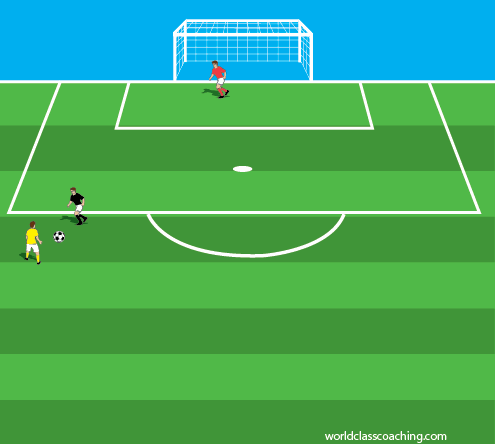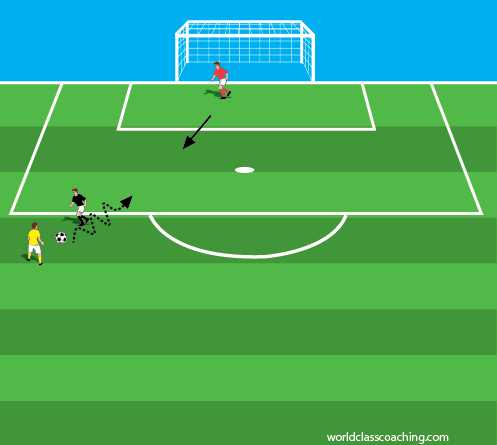Welcome to the Goalkeeping Newsletter. Today’s topic addresses the different stances of a keeper depending upon the positioning of the defense.
Frequently, when we speak about a keepers stance we are referring to their stance when they are preparing for a shot. In this stance, the knees are bent, the hands are out front, the shoulders are directly above the knees, the chest would be perpendicular to the projected flight of the ball etc.

The thing to keep in mind is there are other stances and body positions as well. The first one that comes to mind is the stance a keeper would take for a corner kick. Instead of having the hands out front and low the keeper would most likely have their hands up high (in case an opponent is standing right next to them this is an effective way to prevent the opponent from grabbing the hands or pinning their arms down). Also, the keeper will probably take a higher stance (instead of getting down low) and also will want their body opened to the field (with their lower body either facing the center circle or at 45 degrees.
Another time when the keeper will take a different stance/starting position is when there is pressure on the ball. In the first diagram since there is no pressure on the ball the keeper will want their feet shoulders length apart and side by side. However, if there is pressure on the ball, the starting position changes more to a sprinters stance. Instead of feet side by side, the feet will be staggered.

The reason for this different stance is with this pressure on the ball it reduces the likelyhood of a one time shot and increases the chances of a long touch or through ball. With the keeper in this sprinters stance, it allows the him to get to the ball quickly or to cut off the angle more effectively.

Making sure a keeper understands the different stances depending upon pressure on the ball vs no pressure is important. Making sure they can apply these different stances is vital. Once it’s been explained to the keeper it can be recreated somewhat in a drill but the reality is this is the type of thing a keeper needs to do while integrated within team training. When a team is playing a small sided game, the keeper should be working no the various stances (whether it’s related to the purpose of the game or not). This is one example of why it’s so important for keeper training to be part of team training and not just off to the side. Having the keeper coach working with the keepers during the small sided games will make it MUCH easier for the keepers to understand the concept than simply explaining it and then creating an artificial situation with the other keepers.
Working on the proper stances, depending upon the situation will allow the keeper to start doing this automatically in game situations and will make their job much easier
Have a great day!
Lawrence


